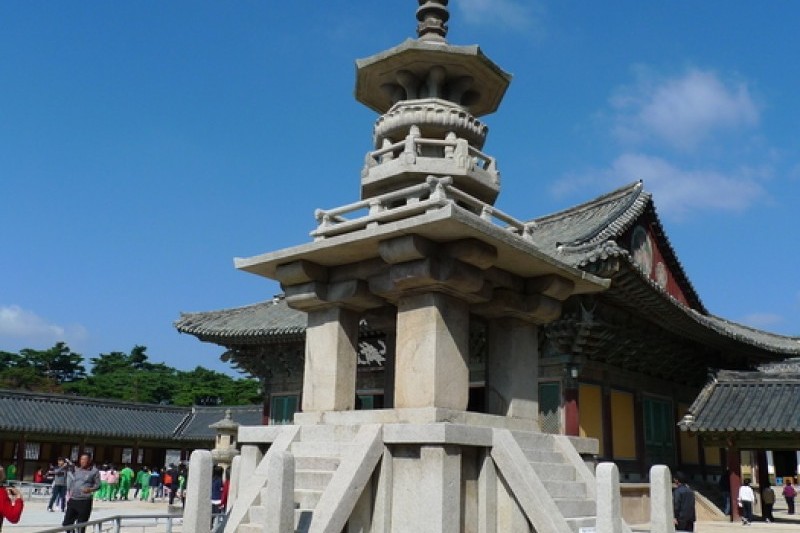Cultural Heritage Sites In Gyeongju: A Journey Through Time
Share
Gyeongju, often referred to as "the museum without walls," is a city in South Korea that boasts a rich tapestry of history and culture. As the capital of the ancient Silla Kingdom, Gyeongju is home to numerous cultural heritage sites that reflect its glorious past. This article will guide you through some of the most significant sites in Gyeongju, providing insights into their historical importance, key attractions, and the best times to visit.
1. Bulguksa Temple: A UNESCO World Heritage Site
Overview
Bulguksa Temple, designated as a UNESCO World Heritage Site, is one of the most famous landmarks in Gyeongju. Built during the Silla Dynasty in the 8th century, this temple is a masterpiece of Buddhist architecture.
Key Attractions
- Daeungjeon Hall: The main hall of the temple, known for its intricate wooden carvings and beautiful murals.
- Seokgatap and Dabotap: Twin pagodas that symbolize the harmony between the physical and spiritual worlds.
- Lotus Pond: A serene area that enhances the temple's tranquil atmosphere.
Best Time to Visit
The ideal time to visit Bulguksa Temple is during the spring (April to June) and autumn (September to November) when the weather is mild, and the surrounding nature is at its most beautiful.
2. Seokguram Grotto: A Marvel of Buddhist Art
Overview
Seokguram Grotto, another UNESCO World Heritage Site, is renowned for its stunning stone Buddha statue and intricate carvings. This grotto, built in the 8th century, is a testament to the artistic and architectural achievements of the Silla Kingdom.
Key Attractions
- Buddha Statue: The main attraction, a 3.5-meter tall statue of Buddha, is surrounded by beautifully carved figures representing various bodhisattvas.
- Grotto Architecture: The unique design of the grotto, including its dome-shaped ceiling and stone walls, showcases advanced engineering techniques of the time.
Best Time to Visit
Visiting Seokguram Grotto is best during the spring and autumn months. The scenic views surrounding the grotto are particularly breathtaking during these seasons.
3. Gyeongju Historic Areas: A Window into the Past
Overview
The Gyeongju Historic Areas encompass a variety of sites that reflect the cultural heritage of the Silla Kingdom. This area is filled with ancient tombs, palaces, and temples, making it a treasure trove for history enthusiasts.
Key Attractions
- Daereungwon Tomb Complex: A large burial site containing the tombs of Silla kings and queens, surrounded by lush greenery.
- Anapji Pond: A picturesque pond that was part of the royal palace complex, known for its beautiful night illuminations.
- Cheomseongdae Observatory: One of the oldest astronomical observatories in East Asia, showcasing the scientific advancements of the Silla era.
Best Time to Visit
The Gyeongju Historic Areas are best visited in the spring and autumn, when the weather is pleasant, and the natural beauty of the surroundings enhances the experience.
4. The Ancient City of Gyeongju: Cultural Festivals and Events
Overview
Gyeongju is not only about historical sites; it also hosts various cultural festivals that celebrate its rich heritage. These events provide a unique opportunity to experience traditional Korean culture.
Key Events
- Gyeongju Cherry Blossom Festival: Held in early April, this festival showcases the stunning cherry blossoms around the city.
- Gyeongju World Culture Expo: A biennial event that features performances, exhibitions, and activities related to Korean culture and history.
Best Time to Visit
Plan your visit around these festivals to immerse yourself in the local culture and enjoy the vibrant atmosphere.
5. Practical Information for Travelers
Getting There
Gyeongju is easily accessible from major cities like Seoul and Busan. You can take a KTX train or a bus for a comfortable journey.
Accommodation
For a comfortable stay, consider booking hotels in Gyeongju. You can find a variety of options that cater to different budgets. Check out Hotels & Flights for the best deals.
Weather Information
Gyeongju experiences a temperate climate, with hot summers and cold winters. The best months to visit are from April to June and September to November, when temperatures are mild and pleasant.
6. Conclusion: A Timeless Experience Awaits
Gyeongju stands as a testament to South Korea's rich cultural heritage. With its stunning temples, ancient tombs, and vibrant festivals, this city offers a unique glimpse into the past. Whether you're a history buff, a culture enthusiast, or simply looking for a beautiful destination, Gyeongju promises an unforgettable experience. Don't miss the chance to explore this remarkable city and its treasures.
For your travel needs, consider booking your flights and accommodations through Hotels & Flights and arrange for convenient transfers with Transfers.
Gyeongju awaits your visit, ready to share its stories and beauty with you.





